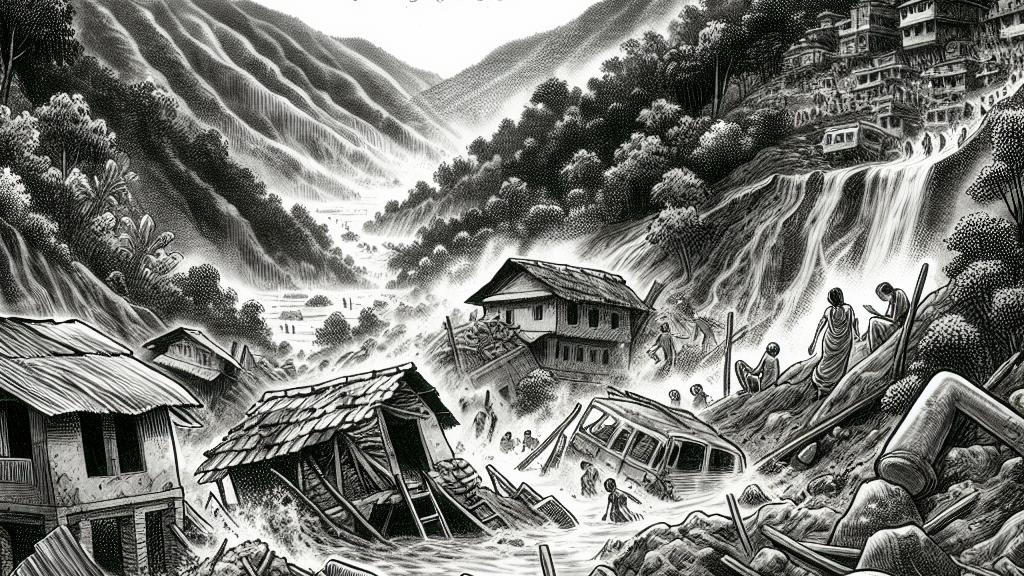Survivors Share Their Night of Terror: Wayanad's Landslide Nightmare
Overview
- In late July 2024, Wayanad, India, was devastated by massive landslides, resulting in over 200 fatalities.
- Survivors faced harrowing nights filled with terror while rescue operations struggled against severe weather conditions.
- The ongoing monsoon highlights the urgent need for enhanced disaster preparedness in vulnerable regions.

The Catastrophe in Wayanad
On the night of July 30, 2024, Wayanad, a stunning district in Kerala, India, was struck by catastrophic landslides that transformed tranquil hills into scenes of devastation. Following days of incessant rainfall, the landscape shifted as soil and mud cascaded down, engulfing homes and tragically taking over 200 lives in the process. Many residents were caught off guard while they slept, leading to the loss of entire families. Eyewitness accounts describe a haunting silence followed by the deafening roar of earth crumbling, leaving communities in shock and mourning. For families like M Fathima’s, that night will forever be etched in memory, shadows of their former lives clinging to the remnants of what once was.
Obstacles to Rescue and Recovery
Rescue operations commenced swiftly, but relentless rainfall posed tremendous challenges, hampering access to the most affected areas. Emergency responders faced hazardous conditions as they navigated through landslide debris and unstable terrain. Eyewitnesses described the chaotic scene, with volunteers and rescuers tirelessly digging through mud as hope waned for those still missing. Despite the valiant efforts of local authorities and the army, reports indicated that hundreds remained unaccounted for, creating a palpable sense of despair among families who waited anxiously for news. This disaster underscored the limitations of current emergency response strategies and amplified the need for better infrastructure and preparedness in landslide-prone regions.
Survivors' Stories: A Test of Strength and Unity
The emotional aftermath of the landslides hit survivors hard, as tales of bravery and loss intertwined. Individuals like K. H. Abbas described fleeing with his family into the night, finding refuge in a nearby forest while the rain fell relentlessly. His description of the night paints a grim picture of fear, filled with uncertainty as they huddled together, unsure of what awaited them. The communal spirit of those affected showed remarkable resilience; neighbors rallied to support one another in relief camps, forming strong bonds through shared grief. As they face the daunting task of rebuilding, the community clings to hope, united now more than ever in their quest for recovery and healing.
The Role of Climate Change in Natural Disasters
The tragic events in Wayanad starkly highlight the relationship between extreme weather conditions and climate change. Experts attribute the severity of recent monsoon patterns to rising ocean temperatures, which have led to more intense and erratic rainfall. This has prompted calls for heightened awareness and proactive measures to mitigate disaster risk in vulnerable regions like Wayanad. Understanding monsoon dynamics and implementing effective disaster response cannot be overlooked if communities are to withstand future calamities. Local governments and national agencies are urged to work together to develop comprehensive climate adaptation strategies, ensuring that future generations will be better prepared and resilient against nature's unpredictability.

Loading...